Employee Attrition is a key metric for organisations to be measuring as it reflects the loss of employees from your business over a certain period of time. Your attrition rate will be a percentage and calculating it gives you a great indication of how things are going at your company, so it’s important to get familiar with it.
High attrition rates can negatively impact productivity and profitability, while low attrition rates may indicate a strong company culture and employee satisfaction. In this blog, we will delve into why attrition rates matter, how to calculate it, and how to use data to make informed decisions for your organisation.
Why Do Attrition Rates Matter?
Consistently measuring and analysing your attrition rate is important because it gives you an indicator of how many people are leaving your company, and gives you the opportunity to delve into why people are leaving, ultimately allowing you to fix any areas or anticipate problems before they happen. .

If your attrition rates are high this could indicate issues with your people's policies and strategy.
Low attrition rates are something to work towards as they bring a whole host of benefits to your organisation, some of which are:
- Improved Productivity: When employees are satisfied with their work environment and feel valued, they are more likely to be productive and committed to their work.
- Reduced Costs: High attrition rates result in increased recruitment and training costs whereas organisations with low attrition rates can use money that would have been spent on finding and training new employees and invest that into other areas of the business.
- Increased Employee Morale: Low attrition rates indicate that employees feel valued and satisfied with their jobs. This leads to increased employee morale, which can improve overall team performance and contribute to a positive company culture.
- Better Customer Relationships: When employees are satisfied with their jobs, they are more likely to provide excellent customer service. This leads to better customer relationships and increased customer loyalty and positive word-of-mouth.
- Competitive Advantage: When people stick with your company for a long time, it indicates that it’s a great place to work, which helps to attract top talent and gives your business a huge competitive advantage.
Attrition Rate Calculator and Formula
Working out your employee attrition involve taking a similar route to calculate your employee turnover. Let’s take a look at the formula…
Attrition rate = Number of employees who left the business / average number of employees x 100
Employee attrition and employee turnover are related concepts, but they are not identical. The calculation of employee turnover typically includes both voluntary and involuntary separations, such as resignations and layoffs.
When calculating employee attrition it’s good to use only the employees who have left the company voluntarily to gain a true reflection of your attrition rate. To calculate employee attrition, you would need to isolate the number of voluntary departures from the total number of departures in the employee turnover calculation. This should be your attrition calculation.
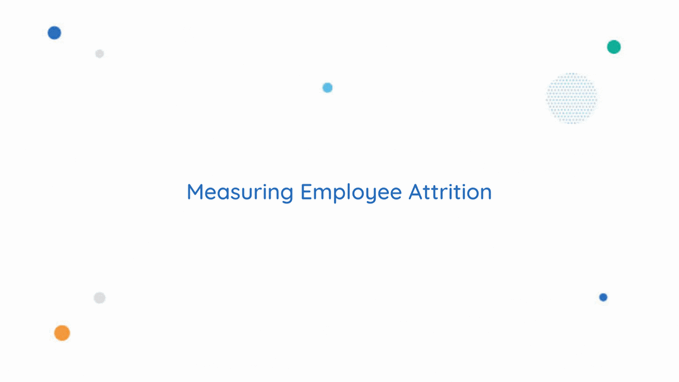
Attrition rate = Number of employees who voluntarily left the business / average number of employees x 100
What Is a High Employee Attrition Rate?
Attrition rates are always best considered in the context of your industry and your company, however when we look at averages anything over 20% is considered high attrition and might need a deeper dig into what could be going wrong. You’ll need to analyse what type of attrition is occurring within your business, and how to prevent it. Let’s explore some of the different types of attrition….
4 Types of Attrition
Attrition can take many forms and understanding the different types of attrition is important for organisations to be able to identify trends, address root causes, and reduce attrition throughout your organisation. Let's look at the four types of attrition.
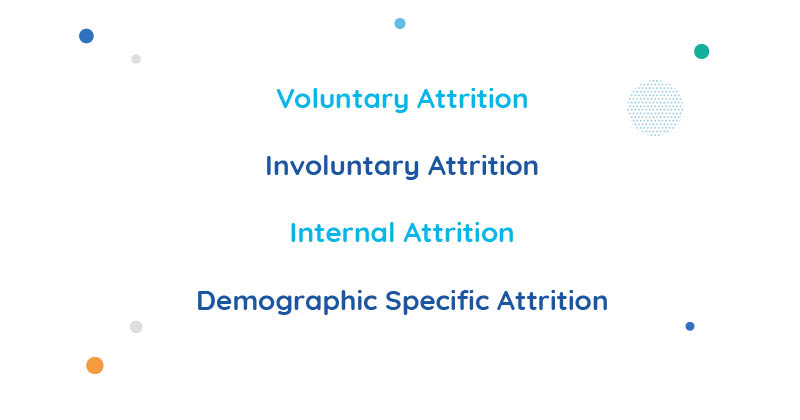
Voluntary Attrition
Voluntary attrition happens when employees leave the company by choice. Employees might leave in search of a job that offers them a better salary or benefits, because of career advancement or situations like retirement. High levels of voluntary attrition are what your company needs to look out for.
Solution: Conducting stay interviews is crucial here because they enable you to find out exactly what it is about your workplace that employees love, what they want more of and what needs to change to encourage people to stay.
Involuntary Attrition
Involuntary attrition refers to the loss of employees who are terminated, laid off, or otherwise forced to leave an organisation against their will. This type of attrition can occur for a variety of reasons, including budget cuts, downsizing, restructuring, poor performance, and misconduct.
Solution: Involuntary attrition can sometimes be inevitable when it comes to budget cuts and financial reasons however if your involuntary attrition rates are high due to poor performance, misconduct and lack of culture fit you might need to think about changing your recruitment and onboarding processes so that you’re hiring employees who are a suitable fit for your company.
Internal Attrition
Internal attrition refers to employees who move to different departments or change job roles or get promoted within the company. Internal attrition can be a good thing as it showcases growth and progression within a company however if a particular department is experiencing a high attrition rate, this could be something to explore as there could be a reason behind the departures.
Solution: Internal attrition isn’t necessarily anything that needs fixing! Internal attrition gives employees a clear indication that there is progression within the company and room to grow, however if the workload from promoting one employee falls on other employees you should be planning well in advance for finding suitable replacements.
Demographic-specific Attrition
Demographic related attrition occurs when people of a certain demographic - age, gender, ethnic minorities, those with disabilities - depart the company quickly and unexpectedly. This could be an indication that an incident has occurred and should be on your radar as such incidents can really harm workplace environments and operations.
Solution: When situations like this happen, you need to take immediate action to understand what happened and prevent it from happening again. .
Causes of High Attrition Rate
High attrition rates can be caused by a number of factors and it’s really important to learn what might be causing employees to leave your company. Here are some of the most common causes of employee attrition:
Salary
Offering employees a competitive salary shows that you value them for the hard work they do. Employees who feel they’re not being paid enough are very likely to leave your company as soon as they get an offer for a higher salary. In fact, in a study by Resources for Employers respondents to choose from a list of top reasons why they’re open to new opportunities, nearly two-thirds (63.4%) selected “I need to make more money”.
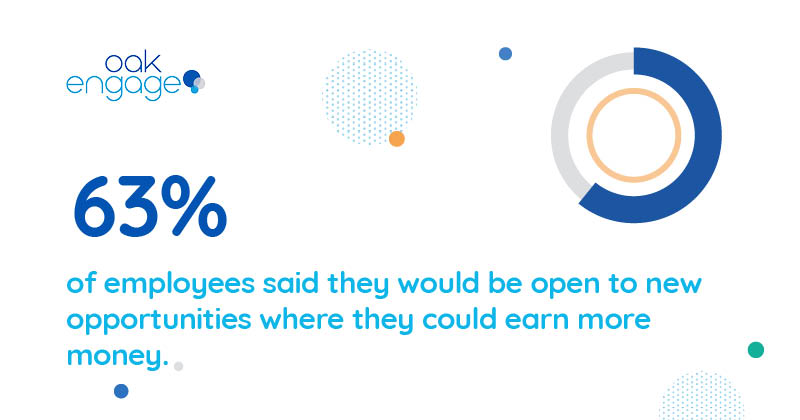
Solution: Offering competitive salaries based on location and having an annual pay raise policy can be a good solution to increase retention.
Growth and Development
59% of millennials claim development opportunities are extremely important when deciding whether to apply for a position. Giving employees the opportunity and support to grow and develop their skills is important for retaining good employees. Top performing employees that feel stuck in their current job are likely to look for career advancement opportunities in other companies.
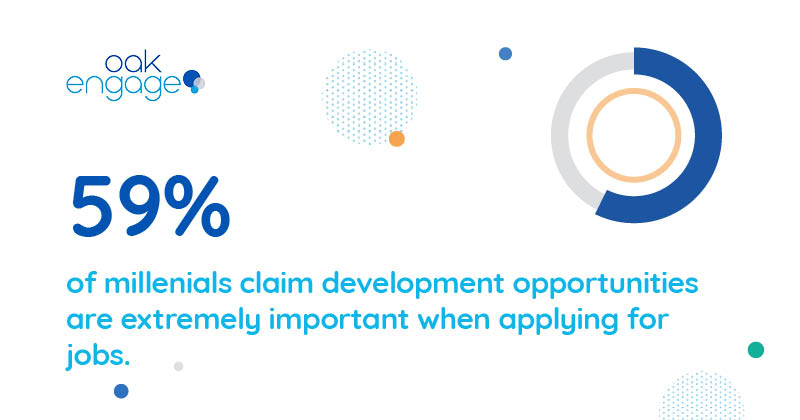
Solution: Offering development sessions and training opportunities so employees can feel that they’re consistently improving their skills.
Company Culture
Company culture is an important factor for 46% of job seekers and pwc found that 72% of people find culture a significant factor in the success of change initiatives. 72
Having a good cultural fit between the workplace and the employees you hire is essential for bringing in the right people and creating the right culture for your company.
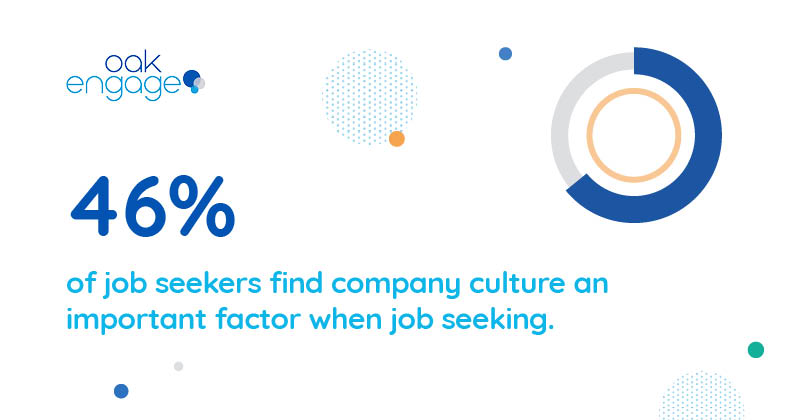
Not having clearly defined values and adhering to them, office gossip, always-on culture, lack of rewards, too much overtime and siloed teams are all signs of toxic company culture. On the other hand, a positive, open, people-centric culture will ensure that employees feel valued and enjoy showing up to work each day.
Solution: Having values and living by them ensures that employees are motivated and aligned in achieving the same common goals, creating an atmosphere of teamwork and togetherness. Make sure you’re looking after your employees by checking in on them regularly, offering them benefits and perks that help them with their work life balance and bringing teams together outside of work so that people can form good working relationships with one another.
Stress Levels
A study by Perkbox found that 79% commonly experience work-related stress and found that work is the biggest cause of stress across the UK. This comes above money worries, relationship stress and health concerns. Employees who feel stressed burned out and overwhelmed often end up getting to a point where they’re looking to leave your company in search of somewhere else that better suits their workload..
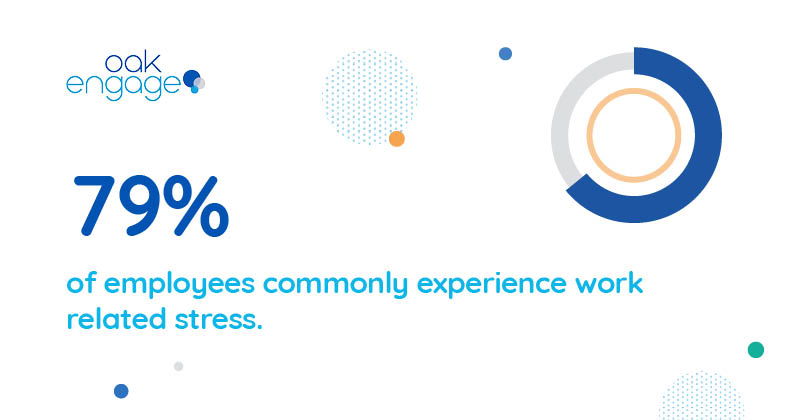
Solution: Ensure your employees have the right tools and tech that enable them to do their tasks efficiently and manage their time well. Have regular check-ins with employees to check for high levels of stress and ensure you’re delegating work for employees who feel overwhelmed. Providing mental wellness programmes, flexible working and offering EAP is essential for giving employees professional support when they need it. And, ensure you’re encouraging employees to take regular holidays and breaks so employees recognise the importance and feel the benefit or properly taking time away from work.
Is Employee Attrition Always a Bad Thing?
Employee attrition should always be considered in the context of your business and your industry. Attrition can be considered both good and bad, but it depends on what type of attrition you’re experiencing - which is why it’s so important to consistently measure your attrition rates to work out if there are really any problem areas. So make it a priority to keep measuring your attrition and turnover monthly, quarterly and yearly.



